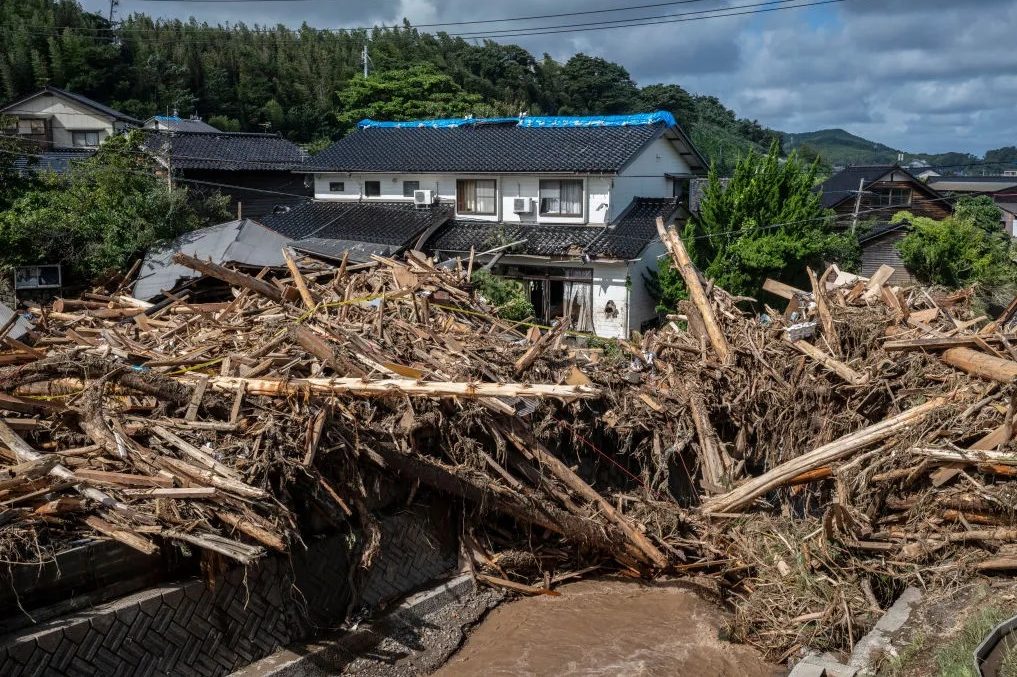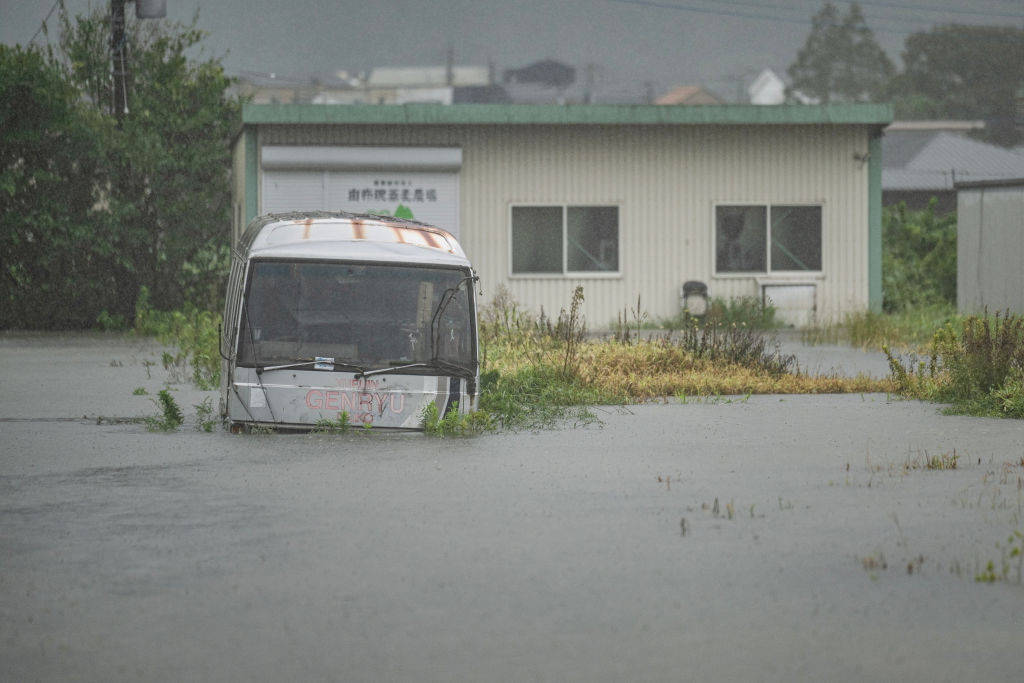Bangkok, Thailand
I was on my 15th-floor balcony with an early afternoon coffee, watching dogs play among the banana trees below. It was strangely quiet. Looking across the skyscrapers that form my horizon, I noticed the 137 Pillars – a luxury high-rise hotel famous for its rooftop pool perched 37 stories above my own street. Down the tower great cascades of water, thousands of gallons, were pouring from that pool. I looked at the jungle plants on my balcony. They were moving back and forth, the blades of the rubber trees swaying as if issuing a warning, and I felt dizzy. Soon all the towers around me were exploding with the same cascades of pool water. For a few seconds, before I had realized what was happening, I thought: “How beautiful.” Then I stood up and keeled over. The whole building was moving; then the rubber trees toppled. “Not a hangover,” I thought calmly as I wandered out into the private landing of my condo and then the communal open bridges which connect all the units on the same floor. People I had never seen before – after 12 years living next to them – had suddenly appeared, running half-dressed or almost naked toward the fire-exit stairs. Old people, stunned Japanese salarymen in steep decline, a few Thai pop stars and a horde of Pomeranians carried in arms.
Over the past 100 years there has hardly ever been an earthquake in Bangkok. They are more a Burmese or a Javan thing. Now it was a 7.7 monster with its epicenter indeed in Myanmar, but it had reached the Thai capital with enormous force. I was barefoot and shirtless, as one is on the balcony in 95°F heat, but as I turned to go back to my apartment, staff members came up with outspread arms and made it known that this was not an option. “But what about my little dog?” I shouted. “No time for little dogs, sir, only running and not dying.”
Pieces of plaster and dust were falling from the great roof above us, windows shattering, and the massive cement building was groaning and creaking as it swayed. Thousands of tons of concrete were beginning to crack. I was swept up in the downward panic toward the distant ground floor. The sweltering staircase was lit only by the windows on each landing which looked down over the communal swimming pool on the second floor. Its normally placid pale-blue rectangle had been turned into a boiling mass of concussed waves. The water sloshed all over the floor and had burst through a balustrade at the far end. This seemed to create in the minds of my fellow tenants a special sense of horror as they passed the windows and looked down. Is not the swimming pool the ultimate symbol of oasis-like serenity?
In the street a crowd of tenants sat gazing up at the great white tower as if waiting for it to collapse. The police arrived. The place was closed off and no one was to re-enter. Hours passed. Drenched in sweat and wet dust, we waited for the all-clear. The towers all around us had taken on an ominously abandoned quality. The skyscraper or condo tower, those confident assurances that our technology is infallible and that our lifestyles are timeless, had turned in the space of a few minutes into promises of nothing better than future doom, burial under rubble. In the burning air the particles of debris seemed to hover as if they had nowhere to go. But I was thinking about Whiskey, my little dog.
Still barefoot, I ignored the protests of the staff and went into the abandoned lobby, where chunks of plaster lay all over the floor. I began to climb my way back to my apartment up the same staircase by which I had descended. But now I was alone – and I was probably alone in the whole building. It was the most Ballardian moment of the whole day. Fear of death, of being buried under masonry. I found Whiskey cowering in my bathroom. I scooped him up and re-emerged into the landing, where the immense walls were still subtly moving. Over the years I’ve often heard that the building is haunted by all the people who have died in it peacefully. It seemed realistic now.
Rejoining the crowd, I was struck by how calm and good-humored it was – a Thai resilience smoothly working under the surface. Moreover, I could see that my building, which I take for granted, is in fact a society in miniature. Sentimentally, you could say that only cosmic near-misses make this obvious to the isolated, self-obsessed tenant. In a city of more than 11 million, only one building collapsed entirely: a new “earthquake-resistant” tower in Chatuchak built by a Chinese company, sinisterly named “China Railway No. 10,” in cooperation with the Thai government. It disintegrated in seconds, killing dozens. Four Chinese nationals were arrested for entering the site to retrieve documents. “Well,” I heard one of my co-tenants say on the street, “so much for the crappy future.”
What struck me later that night, as we sat again on the balcony and looked out at that same future, was how quickly normalcy resumed. Normalcy is a facet of human genius. No warplanes were trying to kill us, the city was not in ruins. Not yet anyway. The dogs were back in the banana plantation. My own dog was asleep in a rattan chair. No doubt the pools had been refilled. There was only one residue, if we lay to one side the grief-stricken families assembled at the site of the collapsed Chinese building in Chatuchak: fear itself. The cars were moving again, the streets had emptied out, but the fear is likely to remain forever in some form or other. The other human genius: fear of the future.
This article was originally published in The Spectator’s May 2025 World edition.























Leave a Reply